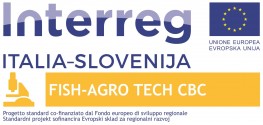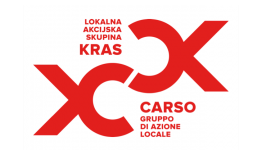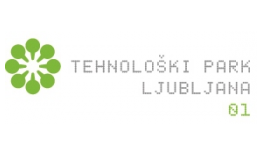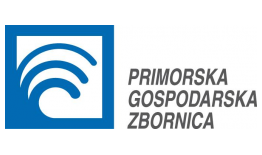Strengthening research, technological development and innovation

Promoting innovation capacities for a more competitive area
The adoption of an open innovation and CLLD approach for transferring the research results from the innovation generators to companies in the agriculture and fisheries/aquaculture sectors, with the implementation of pilot measures for the development of innovative products and processes. The promotion and planning of cross-border technology cooperation through the strengthening and creation of partnerships, networks, and clusters of companies and entities engaged in research and development activities.
The Project aimed to create joint partnerships between the parks and the scientific/technological institutions and business communities of the cross-border territory belonging to the agro-food, fisheries, and aquaculture sectors, by involving the local and coastal action Groups (LAG and FLAG). The aim has been to seek out those with the most suitable expertise for studying the issues of specific interest to the companies in the sectors of intervention, by analysing their innovation needs and defining the relative support areas and services. The geographical and economic context of the cross-border territory looked largely similar to that of the sectors of intervention. The operators on the agricultural side of the Karst area and on the sea side of the Gulf of Trieste have revealed similar needs. The products and methods of cultivation, fishing and breeding have proven to be quite similar on both sides of the border. Over the years, various opportunities have emerged for the collective and integrated management of resources and the identification of possible solutions. The activity has been carried out with an open innovation approach, using a bottom up methodology aimed at identifying the needs of the companies in the sector. These needs have been transferred to the subjects of the research and innovation through benchmarking activities and by flanking the companies with specific technological mediator figures. This has allowed elements of common interest to the companies to emerge, with the aim of identifying innovative product and process solutions capable of: a) developing new products and improving their quality and characteristics; b) increasing the shelf life of the food products; c) reducing production costs; d) developing more innovative production processes and improving their efficiency. A cross-border sectoral plan of technology transfer interventions has been established, promoting specific pilot projects and the creation of cross-border clusters, networks and partnerships.
The project has achieved the objective of transferring the results of research and technological innovation to enterprises in the fisheries-aquaculture and agriculture sectors, active in the Italian and Slovenian cross border area of the Trieste Karst and the Gulf of Trieste.
Following a participatory approach (CLLD), the project partners carried out a careful territorial analysis, with the aim of bringing enterprises and local communities more familiar to technological innovation, identifying their concrete needs of companies and accompanying them, in a shared path, towards appropriate innovation responses. Workshops, such as and individual and collective meetings with companies provided an overall picture of the cross-border technological innovation needs of companies in the sectors concerned. The scientific and technological partners have identified possible innovation responses and those who can apply them.
Thanks to matching activities, carried out in Italy and Slovenia, companies and technological innovation stakeholders jointly assessed the practical viability of the proposed technological solutions. The results allowed the partners to develop 3 pilot activities for the implementation of innovative tools, with impacts on products and production processes.
The project has raised the awareness of companies on the possibilities offered by both technological innovation and collaboration with research, scientific and technological institutions. This has strengthened cooperation between the partners (which has also resulted in a collaboration agreement, also with a view to future planning) and established a wider network for the exchange of experience and results, improving links and aggregations between enterprises and the research and development system.
Lead Partner

Project partner 1

Project partner 2

Project partner 3

Project partner 4

Project partner 5

| Poster evento annuale 30/05/2018 FISHAGROTECH_ITA_1.pdf ( 1015 bytes, published on 7 June, 2018 - 12:44 ) |
MAIN OBJECTIVES OF THE PROJECT
Fish Agro Tech CBC project ended in February 2021.
Born from pre-existing contacts and collaborations of three Local Action Groups (GAL Carso, LAS Istre, FLAG GAC FVG – whose lead partner is project LP, Aries), Fish Agro Tech CBC idea arose from considering the strong geographical and economic continuity in the fisheries - aquaculture and agriculture sectors. Strength points, opportunities and problems appeared quite similar and shared: above all, the need to improve competitiveness, both of sectors and enterprises, especially in terms of processes and products.
Using a participatory approach, the partnership (composed, in addition to the 3 Italian and Slovenian Local Action Groups, by Chambers of economy, scientific bodies and Italian and Slovenian technology parks) pursued and achieved all three specific project objectives. Opportunities and needs for innovation were brought out, analysed and shared by accompanying companies in their innovative paths, leading to the realization of 3 pilot activities. Partners, companies, bodies and institutions have also promoted and consolidated both aggregations between companies on the territory and collaborations between companies and scientific and technological institutions. The partnership has strengthened its expertise and capacity for collaboration (enshrined in a Final Cooperation Agreement). Around the partnership, a network of actors has been created that has allowed to intensify the relationship between cross-border companies and the system related to research and development.
The realization of the activities is summarized in the following numbers.
With the pilot actions, the project has implemented 3 innovative tools/services. The first pilot action aggregated food producers, improving their product offering with the help of an online sales platform. The two other pilot projects have implemented land monitoring systems and meteorological and marine data, improving the processes related especially to cultivation and mythology, increasing the health and food safety of products.
In addition to the 3 project partners (Area Science Park, Slovenian National Institute of Biology, Ljubljana Technology Park), further scientific and research institutions actively participated in the project activities through dedicated working tables. We hereby mentions: a) Scientific and research institutions: OGS-National Institute of Oceanography and Experimental Geophysics; Fisheries Research Institute of Slovenia. b) Bodies with relevant sectoral expertise: (Regional Environment Protection agency) ARPA FVG and the Technical Information Centre for the food safety of bivalve molluscs (established by the FLAG GAC FVG).
The CLLD approach has allowed more than 70 enterprises to interact and collaborate with the research institutions among individuals, members of the participating cooperatives, as well as the 3 Local Action Groups and the 3 representative subjects of the economic categories. 18 were involved in innovation between innovative companies and scientific and research bodies.
In addition to the project website, the dissemination and communication activity of the project has made use of multiple information channels. It has reached a number of recipients reached over 500 stakeholders and recipients belonging to the target groups identified by the project. These are the figures: 2 events dedicated to the general public and the press; 59 releases on the Italian and Slovenian media (44 news in the press, online newspapers and websites, 15 radio and TV services of Italy and Slovenia); newsletter of the project partners; 2050 brochure to print the project and n. 300 on its final results disseminated by the partners.